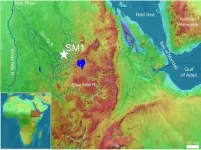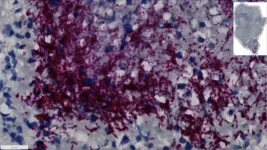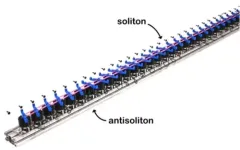(Press-News.org) Many companies proclaiming ethical credentials resist paying a premium to test their suppliers’ sustainability claims, new research suggests.
A team from Bayes Business School (formerly Cass), City, University of London, studied responses from 234 managers with procurement decision-making powers.
While buyers’ purchasing decisions are not solely price-driven, the team found, they are often happy to accept suppliers’ reassurances about sustainability rather than pay a premium for third party verification. Despite accepting that independent verification improves the credibility of suppliers’ claims, the study found that the typical margin buyers are prepared to pay was not statistically significant.
The paper says: “…buyers did not attribute significant additional value to third party-verified sustainability disclosures when compared to self-disclosures. This finding underscores a substantial level of implicit trust that buyers place in the sustainability signals emanating directly from their suppliers.”
While buyers predictably ranked price as the most important factor in decisions (scoring 24 per cent on the Bayes metric), it was only narrowly ahead of ‘product disclosure’ (21 per cent). Disclosure around the suppliers’ processes scored 18 per cent, while information about their sourcing networks scored 15 per cent. The two key advantages of ‘blockchain disclosure’ (see below) – regular updating of information and the level of data security – trailed in as the least important factors in buyers’ decision making, scoring 13 per cent and 8 per cent respectively.
Co-author Sukrit Vinayavekhin, a PhD fellow in management at Bayes, said: “While it is assumed that buyers prefer suppliers who loudly declare their sustainability virtues, we wanted to understand what forms of sustainability disclosure they see as having real value. Our study found no statistically significant evidence of a willingness on the part of the managers to pay a premium for the sort of reliability and credibility provided by third party verification.”
This raises questions about possible greenwashing and virtue signalling by companies.
The research revealed that buyers see self-disclosure around sustainability as better than no disclosure at all. This suggests suppliers could gain a competitive advantage by using voluntary self-disclosure strategically. With limited resources, suppliers may be more likely to secure contracts by self-disclosing information on a range of factors rather than focusing on relatively costly third-party verification for a single factor.
While buyers preferred claims about the product that are substantiated through third-party verification, this was only by a small margin over self-disclosure and the figures are not considered statistically significant.
Co-author Professor Feng Li, Chair of Information Management at Bayes, said: “Some of the biggest retail names find themselves in the unwelcome glare of the media spotlight when suppliers’ dubious practices are exposed. These companies usually claim they believed their suppliers are meeting the highest standards in terms of both their workforce and sustainability. Our study might explain that contradiction and suggests buyers should be investing in third party verification.”
Co-author Dr Aneesh Banerjee, Associate Professor of Management at Bayes, said: “Decision-makers are always working under constraints and must make trade-offs when making difficult choices. This context is no different. Our work suggests that if suppliers have third party-verified sustainability claims, they do have a competitive advantage over other suppliers. For instance, they have a higher chance of being selected – but they should not expect buyers to pay more for it.”
Buyers are willing to pay a premium for the use of blockchain-driven information disclosure, with a margin of around 8 per cent for secure information (which cannot be changed by a supplier) and around 10 per cent for information updated daily. Even though these figures are considered statistically significant, they are the least important elements in buyers’ decision making.
A blockchain platform is based on robust technology that records transactions – delivering operational efficiencies, traceability and secure records in complex supply chains. In the context of information disclosure, data on a blockchain platform is verified in real time through a peer-to-peer network, providing another level of assurance that the data cannot be changed afterward.
The paper says: “Suppliers may use blockchain to assist the disclosure processes, but they should not expect the direct benefits from the technology itself. From our findings, buyers value the disclosed information and its update frequency regardless of the underlying technology used. Thus, suppliers should focus on providing information (about the product, their processes and sourcing)) to maximise the full potential of blockchain usage.”
END
Companies reluctant to pay extra to confirm suppliers’ sustainability claims
Paper raises questions about possible virtue signalling and greenwashing by companies who do not want to fund third party verification or ‘blockchains’
2024-03-20
ELSE PRESS RELEASES FROM THIS DATE:
Deep Earth electrical grid mystery solved
2024-03-20
To “breathe” in an environment without oxygen, bacteria in the ground beneath our feet depend upon a single family of proteins to transfer excess electrons, produced during the “burning” of nutrients, to electric hairs called nanowires projecting from their surface, found by researchers at Yale University and NOVA School of Science and Technology, NOVA University Lisbon (NOVA-FCT).
This family of proteins in essence acts as plugs that power these nanowires to create a natural electrical ...
Metformin during pregnancy affects the brain development in offspring mice
2024-03-20
With the rise in gestational diabetes and metabolic disorders during pregnancy, metformin is also being prescribed more frequently. Although it is known that the oral antidiabetic agent can cross the placental barrier, the impacts on the brain development of the child are largely unknown. An interdisciplinary research team from the German Institute of Human Nutrition Potsdam-Rehbrücke (DIfE) have now been able to demonstrate in a mouse model that although metformin has positive effects in pregnant animals, it does not in the offspring. The results were published in the specialist journal ‘Molecular ...
Exposure to tobacco before birth significantly increased risk of Type 2 diabetes in adults
2024-03-20
Research Highlights:
Exposure to tobacco before birth and beginning smoking during childhood or adolescence were significantly associated with the development of Type 2 diabetes in adulthood, according to a study of nearly half a million adults in the UK Biobank.
Among those exposed to tobacco before birth or who began smoking during childhood or adolescence, participants who had a genetic predisposition to develop Type 2 diabetes and started smoking in childhood or adolescence had the highest risk of developing Type 2 diabetes.
Embargoed until 10:30 a.m. ...
In flies, a single brain cell can drive multiple movements of the body
2024-03-20
NEW YORK, NY — Motor neurons are the cells the brain uses to command muscles to act. Scientists typically thought of them as simple connections, much like the cables that link computers with their accessories. Now, in fly studies, researchers at Columbia's Zuckerman Institute have discovered that single motor neurons can each direct an insect’s body to move in far more complex ways than previously thought.
The findings were published in Nature on March 20.
"This is one of the first times scientists have analyzed in 3D what single motor neurons do ...
Toba supereruption unveils new insights into early human migration
2024-03-20
Modern humans dispersed from Africa multiple times, but the event that led to global expansion occurred less than 100,000 years ago. Some researchers hypothesize that dispersals were restricted to “green corridors” formed during humid intervals when food was abundant and human populations expanded in lockstep with their environments. But a new study in Nature, including ASU researchers Curtis Marean, Christopher Campisano, and Jayde Hirniak, suggests that humans also may have dispersed during arid intervals along “blue highways” created by seasonal rivers. Researchers also found evidence of cooking and stone tools that represent the oldest evidence of archery.
Working ...
Bacteria subtype linked to growth in up to 50% of human colorectal cancers, Fred Hutch researchers report
2024-03-20
Researchers at Fred Hutchinson Cancer Center have found that a specific subtype of a microbe commonly found in the mouth is able to travel to the gut and grow within colorectal cancer tumors. This microbe is also a culprit for driving cancer progression and leads to poorer patient outcomes after cancer treatment.
The findings, published March 20 in the journal Nature, could help improve therapeutic approaches and early screening methods for colorectal cancer, which is the second most common cause of cancer deaths in adults in the U.S. according to the American Cancer Society.
Examining colorectal cancer tumors removed from ...
Reducing the side effects of breast and ovarian cancer treatment
2024-03-20
Some anti-cancer treatments not only target tumour cells but also healthy cells. If their effects on the latter are too strong, their use can become limiting. A team from the University of Geneva (UNIGE), in collaboration with Basel-based FoRx Therapeutics, has identified the mechanism of action of PARP inhibitors, used in particular for breast and ovarian cancer in patients carrying the BRCA gene mutation. These inhibitors block two specific activities of the PARP proteins. By blocking one of them, the toxic effect on cancer cells is maintained, while healthy cells are preserved. This work, published in the journal Nature, will help improve the efficacy of these treatments.
Despite ...
Skeleton-wide study of blood cell formation yields surprising findings
2024-03-20
Imagine being able to count the different types of blood cells being formed inside the tiny bones of a mouse and pinpointing the strings and clusters of cells within the bone marrow that are responsible for producing specific types of blood cells.
That’s exactly what a team of scientists led by experts at Cincinnati Children’s achieved in a far-reaching study published March 20, 2024, in the prestigious journal Nature. Their work adds unprecedented new understanding of the “elegant” and “resilient” anatomy of bone marrow while also generating evidence of unexpected variations in how the skeleton ...
MD Anderson Research Highlights for March 20, 2024
2024-03-20
HOUSTON ― The University of Texas MD Anderson Cancer Center’s Research Highlights showcases the latest breakthroughs in cancer care, research and prevention. These advances are made possible through seamless collaboration between MD Anderson’s world-leading clinicians and scientists, bringing discoveries from the lab to the clinic and back.
Recent developments at MD Anderson offer insights into a combination therapy that slows pancreatic cancer progression, an all-oral treatment for older patients with acute myeloid leukemia (AML) unable to receive intensive chemotherapy, novel targets to protect against osteoporosis and bone metastasis, the generation ...
An endless domino effect
2024-03-20
If it walks like a particle, and talks like a particle… it may still not be a particle. A topological soliton is a special type of wave or dislocation which behaves like a particle: it can move around but cannot spread out and disappear like you would expect from, say, a ripple on the surface of a pond. In a new study published in Nature, researchers from the University of Amsterdam demonstrate the atypical behaviour of topological solitons in a robotic metamaterial, something which in the future may be used to control how robots move, sense their surroundings and communicate.
Topological solitons can be found in many ...
LAST 30 PRESS RELEASES:
Human adipose tissue: a new source for functional organoids
Metro lines double as freight highways during off-peak hours, Beijing study shows
Biomedical functions and applications of nanomaterials in tumor diagnosis and treatment: perspectives from ophthalmic oncology
3D imaging unveils how passivation improves perovskite solar cell performance
Enriching framework Al sites in 8-membered rings of Cu-SSZ-39 zeolite to enhance low-temperature ammonia selective catalytic reduction performance
AI-powered RNA drug development: a new frontier in therapeutics
Decoupling the HOR enhancement on PtRu: Dynamically matching interfacial water to reaction coordinates
Sulfur isn’t poisonous when it synergistically acts with phosphine in olefins hydroformylation
URI researchers uncover molecular mechanisms behind speciation in corals
Chitin based carbon aerogel offers a cleaner way to store thermal energy
Tracing hidden sources of nitrate pollution in rapidly changing rural urban landscapes
Viruses on plastic pollution may quietly accelerate the spread of antibiotic resistance
Three UH Rainbow Babies & Children’s faculty elected to prestigious American Pediatric Society
Tunnel resilience models unveiled to aid post-earthquake recovery
Satellite communication systems: the future of 5G/6G connectivity
Space computing power networks: a new frontier for satellite technologies
Experiments advance potential of protein that makes hydrogen sulfide as a therapeutic target for Alzheimer’s disease
Examining private equity’s role in fertility care
Current Molecular Pharmacology achieves a landmark: real-time CiteScore advances to 7.2
Skeletal muscle epigenetic clocks developed using postmortem tissue from an Asian population
Estimating unemployment rates with social media data
Climate policies can backfire by eroding “green” values, study finds
Too much screen time too soon? A*STAR study links infant screen exposure to brain changes and teen anxiety
Global psychiatry mourns Professor Dan Stein, visionary who transformed mental health science across Africa and beyond
KIST develops eco-friendly palladium recovery technology to safeguard resource security
Statins significantly reduce mortality risk for adults with diabetes, regardless of cardiovascular risk
Brain immune cells may drive more damage in females than males with Alzheimer’s
Evidence-based recommendations empower clinicians to manage epilepsy in pregnancy
Fungus turns bark beetles’ defenses against them
There are new antivirals being tested for herpesviruses. Scientists now know how they work
[Press-News.org] Companies reluctant to pay extra to confirm suppliers’ sustainability claimsPaper raises questions about possible virtue signalling and greenwashing by companies who do not want to fund third party verification or ‘blockchains’





